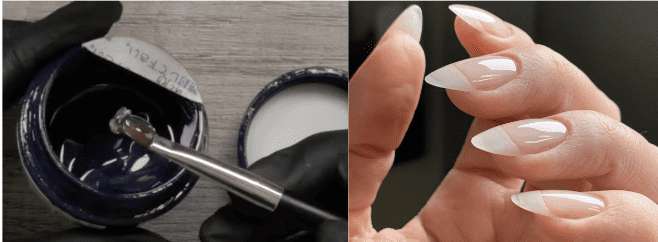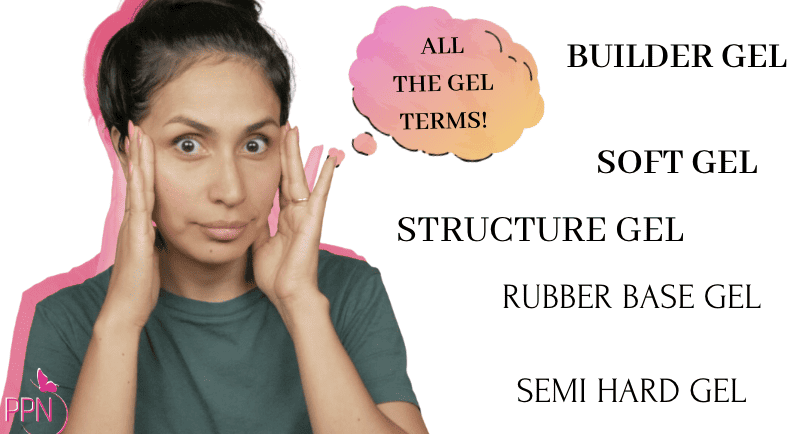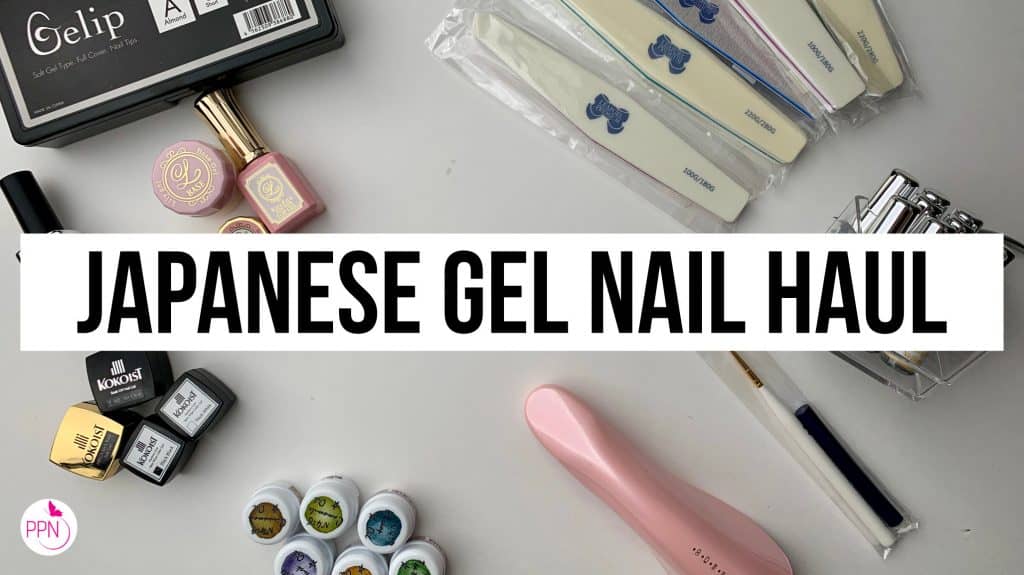The structured gel nail service has spread like wildfire in salons and it is here to stay because it actually has been here for over 30+ years back when light curing gel was invented in it’s original form of application, of pot and brush- our favorite method of application in this channel. Stick with me and you’ll learn why.

The most recent popular way of doing structured gel nails involves using a 3-in-1 bottled gel formula. The gel nail formula is 3-in-1 as it involves base, builder, and color all in one. The bottled formula is a thinner viscosity gel that self-levels effortlessly making it super beginner and DIY friendly.

The structured overlay can be done with a range of different product viscosities and so with that in mind I want to go over who is a good candidate for structure gel nails and what viscosity suits each candidate.
Let’s dive in.
Structured Gel Nails?
If you are new to structured gel nails, and are like what are structured gel nails? A structured gel manicure or structure gel overlay (the choice of term is up to you) is a reinforced gel application on the natural nails done with a thicker viscosity soft gel (aka soak-off gel).
Because a structured gel overlay is done with soft gel, not hard gel, anyone is a candidate for structured gel nails.
Yup, short, medium, long, flat, or with structure.
There is a way for all nails when you use a structured gel.
The only people that wouldn’t benefit from a structured overlay are those wanting extreme lengths or shapes.

Those types of shapes and lengths only hard products like acrylic, hard gel, and polygel can only create.
Viscosities
But first let’s talk viscosities, there are two:
Low and high.
Low viscosity structured gels are typically in bottled form and are more suitable for short to medium length nails.

The viscosity is low meaning it is more liquidy or runny.
These characteristics also make it work-able out of a bottle. Your structured gels have both thick and thin resins, and in order to get a low viscosity composition, the gel is formulated with more thin resin rather than thicker ones.
So maybe you’re thinking…
That sounds like a low viscosity gel would be less strong, and that’s true, but it is still very strong… just typically not stronger for longer nails.
The max free-edge length for a low viscosity soft gel builder is right before half of the total amount of nail plate attached to the nail bed. Past this length is where the strength of your low viscosity gel or bottled builder starts maxing out.
Do keep in mind that the nails are going to grow out 3-6 weeks depending on when those nails get serviced again.
Now you’ll know that the strength of your bottled builder gel application is maxing out if you or your client are experiencing a lot of bending just with casual impact or if you’re experiencing breaks on the sides of the nail on the stress area.
At that point, in your next service you will have to decide if you’re going to go shorter on the nails or switch over to a potted soft gel.
High viscosity structured gels
High viscosity structured gels are found in pots because they are thicker, and so this gel composition doesn’t easily dispense from a bottle. They contain more thick resin.

High viscosity structured gels (or potted soft gel) are ideal for when you’re extending beyond half of the total amount of attached nail plate to the nail bed, which is what I would consider a “longer nail length”.
But a potted soft gel can be applied over any length nail. Short, medium, or long! So you or your client can grow natural nails however long and reinforce those long natural nails with a potted soft gel builder
Often to help students keep things super easy and also buying only a few gel nail items… not all the things, I recommend starting with a potted soft gel from the get go.
That will also make going to a bottled builder soo much easier as a potted soft gel does require a bit of finesse and more technique.
If you’re interested, inside my Master Gel Nails Course, I teach smooth self-leveled gel manicures and structured overlays all step by step. You can learn more about potted soft gel, my journey with them, and all about the Master Gel Nails Course in the free masterclass linked HERE.
So now that you understand viscosities, you probably are already figuring out who is a candidate for which kind of structure gel.
Remember, everyone who doesn’t want an extreme nail length or shape qualifies for a structured gel overlay, but you, especially as the nail tech and expert, have to appropriately assign the correct builder to your clients for the best long-wearing results.

By the way, if you want to learn more about the gel terms, I’ll link you here to a recent video I did on all the gel terms.
One last thing,
There is another condition to consider when assigning the correct viscosity gel, and that is when you are assessing natural nail damage.
If the nails are too damaged a potted soft gel will be the better option, as it will not flex too much. The damage on the natural nails are perforations that make the nail bend more than usual and using a flexible strong product, as is a potted soft gel, will flex just enough with the natural nail and at the same time offer support.
You can apply potted soft gel on any length damaged nails, but if the nails are too damaged, do consider shortening them.
SO let’s recap…
What are structured gel nails?
Structured gel nails are a gel nail service where a thicker viscosity soft gel is used to apply a reinforced gel manicure (or gel overlay service).
Structure gel is offered in two viscosities: thin and thick.
The thin option is usually offered in a bottle while the thick option is offered in a pot.
Your short to medium-length nails will fare wonderfully in a thin viscosity structure gel, while your longer nail clients will experience a stronger result in a higher viscosity potted gel.
If the nails are too damaged and depending on the length that you or your clients want to maintain, the potted more viscous option may be the better product strength.
To assign the correct structured gel for your client (or yourself) the most obvious way to do so is to analyze the nail length.
- Short nails = low viscosity gel, (usually a builder in a bottle)
- Medium nails = either low or high depending on the condition of the natural nail, if damage opt for a PSG
- Long nails = high viscosity as in a potted soft gel
And remember a PSG is an universal fit because it can be applied on any natural nail length where a bottled gel will max out in strength at a certain length usually 50% of nail plate attached to nail bed.
With that being said, a bottled builder is still very strong. You just have to keep an eye on your nail lengths to see where about, is a good time to switch over to a potted soft gel builder.
Just one little extra nugget of gold I want to emphasize…
Never underestimate the delicate touch and aesthetic of applying your gels from cute little pots. I’ve gotten clients and students to share how taken-care-of and ‘lux” that experience all feels for them.
Some of our students even join our MGN program to learn how to do this service themselves as they find it difficult to find a professional in their area.
Well, I hope you learned lots today.
Content written by Paola Ponce
Loved this blog? Then I think you’ll love learning more about my journey as a specialized gel nail solopreneur in the nail industry. Click here to get instant access to my free masterclass. These blogs are copyrighted material, and any use of this blog is not permitted without written concern first. Some of these blogs contain affiliate links that give us a small commission when qualifying purchases are made and help us maintain the blog. Thank you for being so supportive, which helps us to continue creating valuable resources and content like this.


![[[ Nail Thoughts X Kokoist ]] Bottled Gel Launch | All COLORS SWATCHED](https://paolaponcenails.com/wp-content/uploads/2020/11/ntswatchesnewthumb-1024x575.jpg)